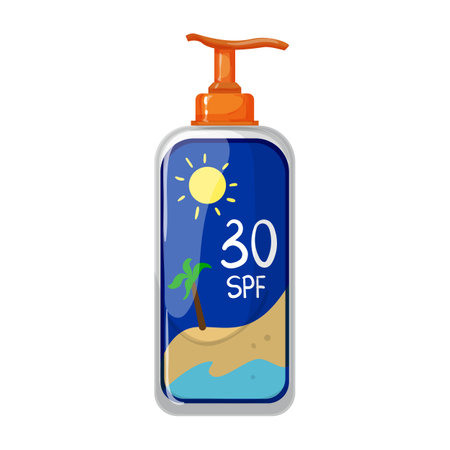Understanding Oil Cleansers: What Are They?
Oil cleansers have quickly become a staple in the American skincare scene, making waves for their unique approach to washing your face. But what exactly are they? Unlike traditional foaming cleansers that rely on surfactants to strip away dirt and oil, oil cleansers use nourishing oils—such as sunflower, jojoba, and olive—to gently dissolve makeup, sunscreen, and impurities without disrupting your skin’s natural balance. The main ingredients often include plant-based oils, emulsifiers that help rinse everything off cleanly, and sometimes added antioxidants or soothing botanical extracts. In a country where double cleansing is gaining popularity and the focus on healthy skin barriers is stronger than ever, oil cleansers fit right in with American values of self-care and individuality. Whether you wear a full face of makeup or just want a gentle yet effective cleanse at the end of the day, these products promise a new way to achieve that fresh-faced glow while embracing the diversity of modern skincare routines.
2. How Oil Cleansing Works: The Science Behind the Trend
The science behind oil cleansing is rooted in a simple chemistry principle: “like dissolves like.” In other words, oils are uniquely effective at breaking down and dissolving other oils—including the sebum naturally produced by your skin, as well as stubborn makeup, sunscreen, and daily grime. Traditional foaming cleansers often strip away both dirt and your skin’s natural moisture barrier, but oil cleansers take a gentler approach. When massaged onto dry skin, they bond with the oils and impurities sitting on your face. With a splash of water or a damp washcloth, these unwanted elements are lifted away, leaving your skin clean but not squeaky or tight. This method has become especially popular in the U.S. beauty community for its ability to melt away even waterproof mascara and long-wear foundation without harsh rubbing or tugging.
Why Oil Cleansers Are Trending in the U.S.
American consumers are increasingly prioritizing skincare routines that support—not sabotage—their skin’s natural balance. As more people embrace double-cleansing (starting with an oil cleanser before following up with a gentle water-based cleanser), influencers and dermatologists alike have highlighted oil cleansers’ versatility across different skin types. Whether you’re dealing with oily, combination, or dry skin, the right blend of plant-based or mineral oils can effectively cleanse without clogging pores or causing irritation.
How Oil Cleansers Compare to Traditional Cleansers
| Oil Cleansers | Traditional Foaming Cleansers |
|---|---|
| Dissolve makeup & sunscreen efficiently | May struggle with waterproof products |
| Support skin’s moisture barrier | Can strip natural oils |
| Gentle on sensitive skin | Potentially drying or irritating |
The Bottom Line
With their science-backed cleansing power and growing popularity in American skincare culture, oil cleansers offer a fresh alternative for those seeking effective yet gentle cleansing. Their ability to break down impurities while respecting your skin’s natural defenses is fueling their rise from niche trend to mainstream must-have.

3. Comparing Oil Cleansers to Traditional Face Washes
When it comes to keeping your skin clean and healthy, the American beauty scene offers a variety of options. Two of the most popular types are oil cleansers and traditional face washes like gel and foaming cleansers. But how do they really stack up against each other? Let’s break down what sets them apart, especially when considering different skin types and the results you’re after.
How Oil Cleansers Work
Oil cleansers use a blend of nourishing oils to dissolve makeup, sunscreen, and daily grime without stripping your skin’s natural moisture barrier. This method is rooted in the idea that “like dissolves like”—meaning oils can effectively remove excess sebum and impurities. They’re especially favored by those with dry or sensitive skin because they tend to leave skin feeling soft, hydrated, and balanced.
The Traditional Approach: Gel & Foaming Washes
On the flip side, many Americans reach for gel or foaming cleansers. These often contain surfactants that create a satisfying lather and offer a squeaky-clean finish. They’re great at tackling oiliness and clearing out clogged pores—making them a go-to for people with oily or acne-prone skin. However, some formulas can be a bit too harsh, stripping away essential oils and leaving skin tight or dry.
Skin Types & Choosing What Works
If you have dry or mature skin, oil cleansers may help maintain moisture while still providing an effective cleanse. For combination or oily skin, a gel or foaming wash can help manage shine and prevent breakouts, though gentle formulations are key to avoid irritation. And if you wear heavy makeup or SPF (which is super common in the U.S.), many skincare fans swear by double cleansing—using an oil cleanser first, then following up with a traditional face wash for extra clean results.
The Bottom Line: It’s All About Balance
Your ideal cleanser depends on your unique skin type and goals. Oil cleansers excel at removing stubborn buildup gently, while gels and foams cater to those wanting that ultra-fresh feel. No matter which route you choose, the real win is finding what keeps your skin happy—because everyone deserves skincare that celebrates their individuality.
4. Skin Benefits and Concerns: Who Should Use Oil Cleansers?
Oil cleansers have made a splash in the American skincare scene, but are they truly suitable for everyone? Let’s break down the potential benefits by skin type, as well as address some common concerns that U.S. consumers often bring up—like breakouts or leftover residue. The right oil cleanser can be a game-changer, but it’s important to know what you’re working with.
Benefits by Skin Type
| Skin Type | Potential Benefits of Oil Cleansers |
|---|---|
| Dry Skin | Oil cleansers help replenish moisture and prevent over-stripping, leaving skin feeling nourished and soft. |
| Oily/Acne-Prone Skin | Contrary to popular belief, certain lightweight oils can balance natural sebum production and help dissolve pore-clogging impurities. |
| Sensitive Skin | Gentle formulas with minimal ingredients can reduce irritation, soothe inflammation, and avoid harsh surfactants. |
Common Concerns Among U.S. Consumers
Will Oil Cleansers Cause Breakouts?
This is probably the number one question. While using oil on oily or acne-prone skin may seem counterintuitive, many dermatologists in the U.S. agree that the “like dissolves like” principle applies—meaning cleansing oils can actually help remove excess oil without disrupting your skin barrier. However, it’s crucial to choose non-comedogenic formulas and rinse thoroughly.
What About Residue?
No one likes feeling greasy after washing their face! Some consumers worry about leftover film from oil cleansers, especially if they’re used to foaming cleansers. The solution? Many Americans opt for double cleansing: first an oil cleanser to melt away makeup and sunscreen, then a gentle water-based cleanser to ensure a fresh finish. Look for products labeled as “emulsifying” or those that turn milky when mixed with water—they’re less likely to leave unwanted residue.
Bottom Line
Oil cleansers can offer real benefits across different skin types—but your experience will depend on picking the right formula for your needs and making sure you’re rinsing properly. If you’re trying an oil cleanser for the first time, patch test it on a small area and listen to your skin’s feedback!
5. How to Incorporate Oil Cleansers into Your Routine
Making Oil Cleansing Work for Your Lifestyle
Getting started with oil cleansers can feel a little intimidating if you’re used to classic foaming face washes, but it’s easier—and more versatile—than you might think. Many Americans are discovering that integrating oil cleansers into their daily routine doesn’t require an overhaul of their favorite skincare products. Here’s how you can make the most out of this skincare trend, whether you go for the full K-beauty double cleanse or prefer a quick, solo step.
Double Cleansing: The Two-Step Secret
If you wear sunscreen, makeup, or live in a city with lots of pollution, double cleansing is the way to go. Start by massaging a nickel-sized amount of oil cleanser onto dry skin using gentle, circular motions—think of it as a mini facial massage after a long day. This melts away oil-based impurities like sebum and foundation. Rinse with lukewarm water (never hot!), then follow up with your regular water-based cleanser to sweep away sweat and leftover residue. Double cleansing at night gives your skin that fresh, “just-cleaned” feeling without stripping away moisture.
Solo Cleansing: Less Is More
For those mornings when time is short or your skin just needs a gentle refresh, oil cleansers work beautifully on their own. Simply massage onto dry skin and rinse well—no need for a second step unless you feel extra oily or layered on heavy SPF. This approach is especially great for people with drier or sensitive skin types, helping maintain your natural barrier while still getting clean.
Tips and Common Pitfalls
- Patch Test First: Always test new formulas on a small area to avoid unexpected reactions.
- Avoid Over-Cleansing: Twice a day is usually enough; more than that can disrupt your skin’s balance.
- Skip Harsh Washcloths: Use clean hands or a soft microfiber cloth if you need extra help removing product.
- Watch Out for Pore-Clogging Oils: If you’re acne-prone, look for “non-comedogenic” on the label and avoid mineral oil-heavy blends.
The Bottom Line
No matter your routine, remember that consistency is key and less can be more when it comes to achieving healthy-looking American skin. With these practical tips, oil cleansers can become an easy, effective addition to your daily self-care ritual.
6. Popular Oil Cleanser Picks in the U.S. Market
As oil cleansers have skyrocketed in popularity, the American skincare market now offers a diverse range of options that cater to all skin types and budgets. Whether you’re new to double cleansing or a seasoned pro, there’s something for everyone. Let’s take a look at some of the most talked-about oil cleansers currently trending across the United States.
Cult-Favorite Oil Cleansers
Among beauty enthusiasts and skincare gurus, certain oil cleansers have achieved near-iconic status. DHC Deep Cleansing Oil is one such staple; loved for its olive oil-based formula, it melts away makeup—even stubborn waterproof mascara—without leaving a greasy residue. Another fan favorite is the Tatcha Pure One Step Camellia Cleansing Oil, which delivers a luxurious feel with Japanese camellia oil while also being gentle on sensitive skin.
Drugstore Gems
If you’re looking for affordable yet effective options, American drugstores are stocked with impressive picks. The Burt’s Bees Cleansing Oil combines coconut and argan oils for a nourishing cleanse that fits most budgets. Neutrogena Ultra Light Cleansing Oil is another wallet-friendly choice, praised for its lightweight texture and ability to rinse cleanly without clogging pores.
Inclusivity in Formulations
The U.S. market has also responded to consumer calls for products that suit diverse skin needs. For example, Pond’s Cold Cream Cleansing Balm transforms from balm to oil, making it accessible for those who prefer different textures but still want the benefits of oil cleansing. There are even fragrance-free and hypoallergenic versions available for sensitive or allergy-prone skin.
Trending Newcomers & Indie Standouts
Beyond established brands, indie labels like Then I Met You Living Cleansing Balm have captured attention for their unique blends and aesthetic appeal. These newcomers often focus on clean ingredients and transparent sourcing, resonating with eco-conscious consumers eager to support small businesses.
No matter your skin type or budget, the U.S. market offers an oil cleanser that can fit seamlessly into your routine—proving just how versatile and mainstream this skincare trend has become.
7. Final Thoughts: Are Oil Cleansers Worth the Hype?
When it comes to oil cleansers, the buzz is real—and for good reason. As American beauty trends continue to celebrate both innovation and inclusivity, oil cleansers have stepped into the spotlight as a versatile option for people of all skin types and backgrounds. But are they truly better for your skin? The answer depends on your unique needs and goals.
Oil cleansers excel at gently dissolving makeup, sunscreen, and daily grime without stripping away essential moisture. For many, especially those with dry or sensitive skin, this can be a total game changer. However, folks with oily or acne-prone skin might hesitate, worried that adding more oil will lead to breakouts. The reality is, with the right formulation—think non-comedogenic oils and clean ingredients—oil cleansers can actually help balance sebum production and soothe irritation.
American skincare culture is increasingly diverse, reflecting a beautiful tapestry of skin tones, textures, and concerns. There’s no one-size-fits-all answer here: some may find their holy grail in an oil cleanser, while others prefer gel or foam formulas. It’s all about experimenting and tuning in to what works for you.
At the end of the day, oil cleansers are not a miracle cure—but they are a worthy addition to your skincare toolkit if you’re seeking gentle yet thorough cleansing. Listen to your skin, embrace the journey of self-care, and remember: there’s no “right” way to glow. Whether you go all-in on oil or stick with what you know, your routine should always make you feel confident, comfortable, and authentically yourself.


